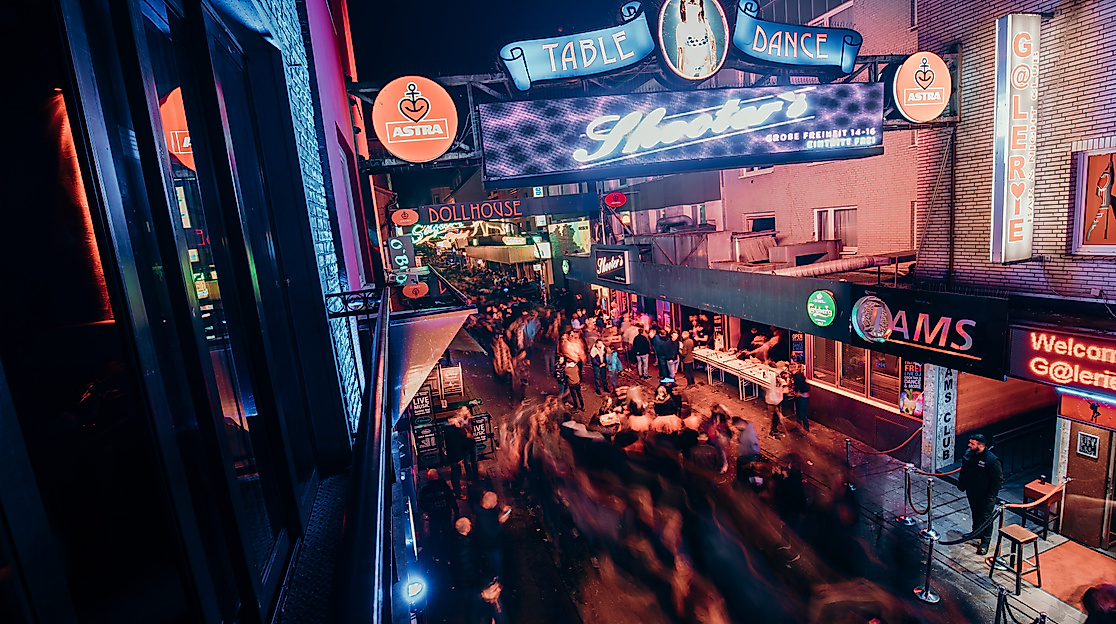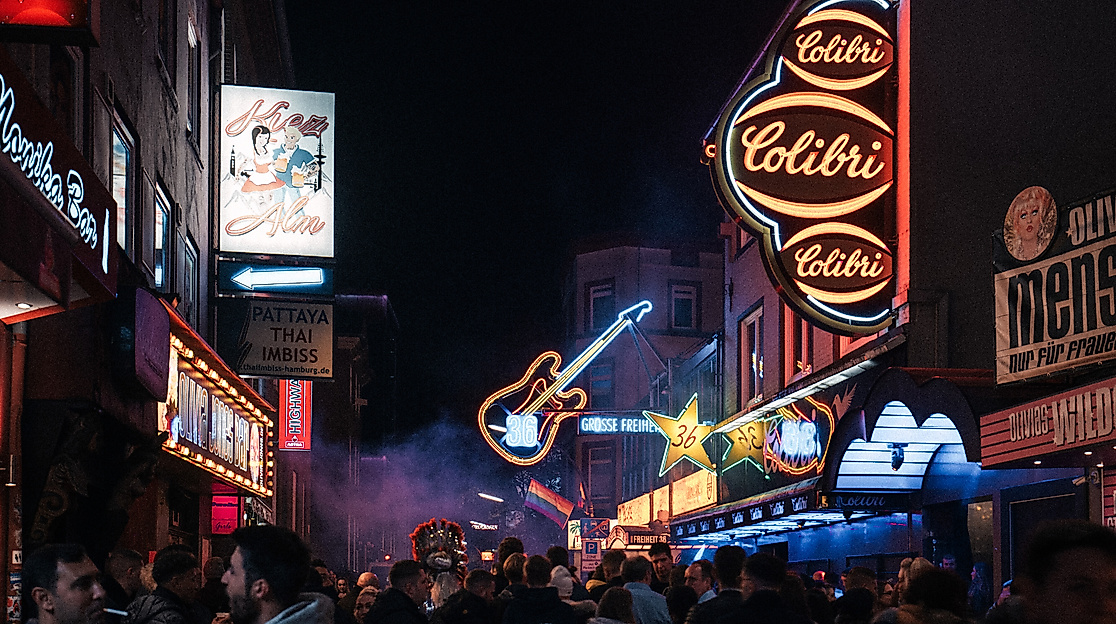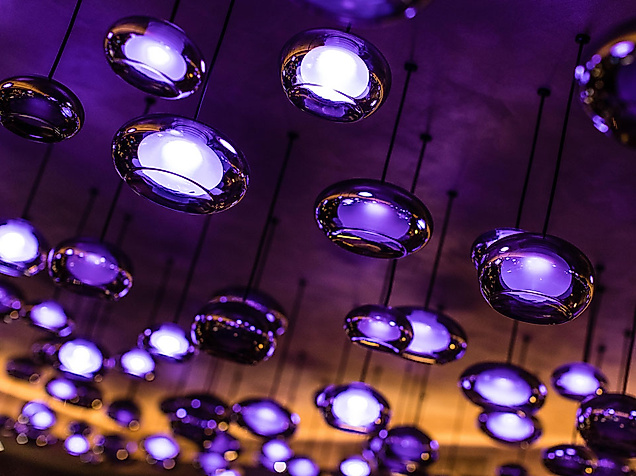When the world thinks of St. Pauli, it thinks of pictures from the street "Große Freiheit". Nowhere is the amusement industry of St. Paulis more concentrated than in this narrow street, which becomes a pedestrian zone in the evening hours.
Today a colourful mix of establishments characterises the street. These include Dollhouse, Susi's Showbar, Olivia Jones Bar / Showclub, Bunny Burlesque, Wild Boys, Große Freiheit 36, Thai Oasis, Grünspan, Indra and many more.
Around 1940 the myth of Große Freiheit was born
Hans Albers languished from the wide open sea, horses stepped with lightly dressed ladies on their backs through the sand of the Hippodromes, music resounded from countless establishments onto the streets and sailors emptied the drink stores. A very big boost in international fame was brought by 5 - later 4 - young musicians from Liverpool. The Beatles gained their first experience on the stages of the Grosse Freiheit (Indra, Kaiserkeller, Starclub) and performed a world record number of concert hours. A lot of background can be learned during a Beatles tour.
Where the name "Große Freiheit" has its origin
One more hint is allowed here. In the Große Freiheit stands the catholic church St. Joseph. This is a clear indication of the real history of this street. The name of this street has to do with freedom. The street, which originally belonged to Altona and thus Denmark, marks the old city limits. Freedom of religion, trade and guilds were already in force here in the 17th century - the people of Hamburg had to wait a long time for this.









